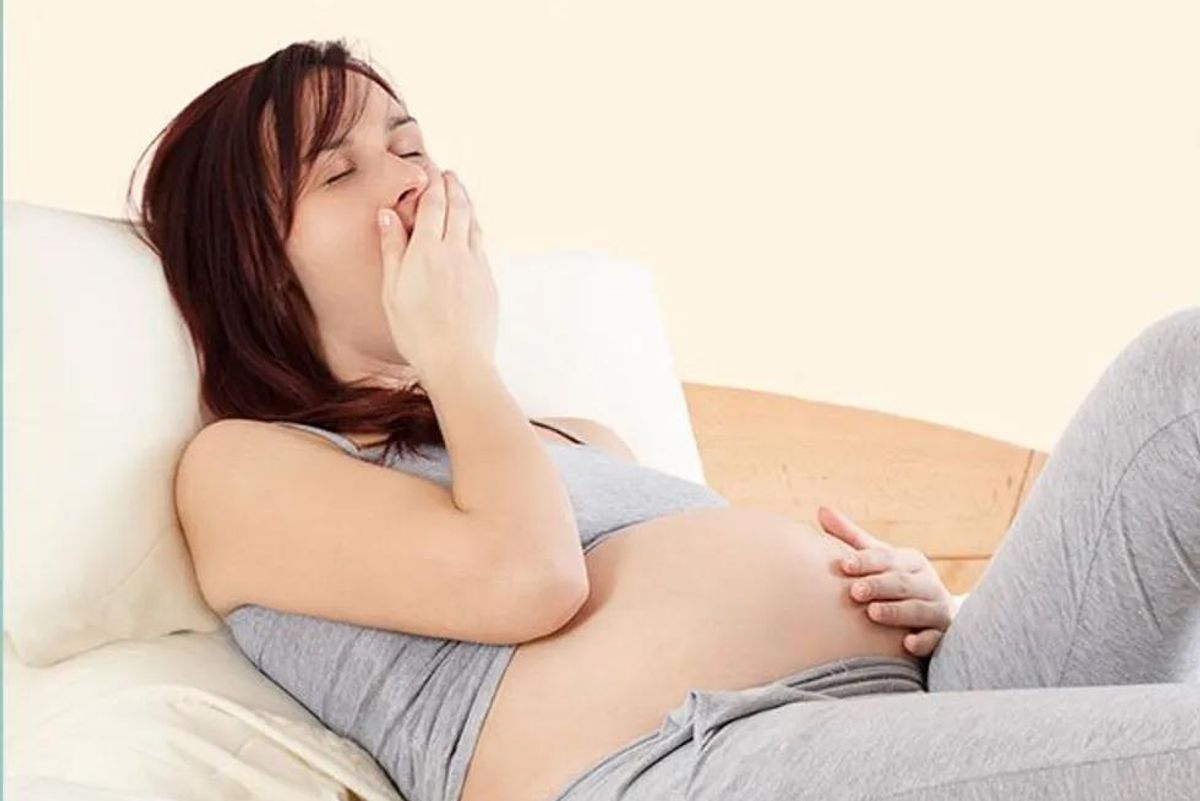By Judette Louis, MD, MPH, University of South Florida, SWHR Interdisciplinary Network on Sleep Member and Yu Sun Bin, PhD, MPH, University of Sydney
Many women and their doctors assume that tiredness is a given in pregnancy. After all, it isn't easy to sleep when you have to accommodate an abdomen the size of a pumpkin and a compressed bladder.
The significant changes to your body involved in growing and sustaining a human life also mean the additional need for sleep and rest is a routine part of pregnancy.
But for some women, tiredness and sleepiness are actually symptoms of something more serious. Excessive sleepiness could indicate obstructive sleep apnea (OSA), a condition in which the airway is temporarily blocked during sleep, causing pauses in breathing and a decrease in blood oxygen levels.
Luckily the brain registers this change and wakes you up, gasping for air. This can happen up to hundreds of times each night, but you can be unaware of all the times your sleep has been interrupted.
Apart from making you tired in the morning, OSA is bad news for pregnancy. Pregnant women with OSA are more likely to develop conditions such as gestational diabetes and pregnancy related hypertension, including the potentially life-threatening condition of preeclampsia.
These complications increase the chance that a caesarean section may be necessary. Women with OSA are also more likely to have longer hospital stays and can suffer uncommon but serious complications such as heart failure and blood clots in their lungs.
OSA also affects your baby, as babies of mothers with OSA are more likely to be born prematurely, before 37 full weeks, and may therefore require monitoring in a neonatal intensive care unit. Even when babies of mothers with OSA reach full term, they are more likely to need extra care before they can be discharged home and often weigh less than babies of mothers who do not have OSA.
It's unclear why pregnant women develop OSA and whether it resolves by itself after pregnancy, but research indicates obesity is a major risk factor. The additional weight women gain with their baby bump, as well as swelling of the neck and throat areas that happen during pregnancy, may also play a role.
The best way to avoid OSA appears to be maintaining a healthy weight before pregnancy. If you are already pregnant, keep an eye out for the symptoms of snoring, snorting and waking gasping for air at night. You can also ask your partner if they have noticed pauses in your breathing while you are sleeping.
The good news is that OSA is treatable, with continuous positive airway pressure delivered through a mask over your nose and mouth, which will help you breathe as you sleep.
Expectant mothers have enough to think about without fretting over whether a sleep disorder is interfering with their baby's growth and development. If you do have concerns, talk to your health care provider.
The Society for Women's Health Research is committed to the health of women and their children. Learn more about pregnancy and maternal health here, and learn more about our Sleep Network here.
Follow Society for Women's Health Research on Twitter: www.twitter.com/SWHR
More:
References
Izci-Balserak B, Pien GW. Sleep-disordered breathing and pregnancy: potential mechanisms and evidence for maternal and fetal morbidity. Current Opinion in Pulmonary Medicine. 2010;16(6):574-582.
Pamidi S, Pinto LM, Marc I, Benedetti A, Schwartzman K, Kimoff RJ. Maternal sleep-disordered breathing and adverse pregnancy outcomes: a systematic review and metaanalysis. American Journal of Obstetrics and Gynecology. 2014;210(1):52 e1- e14.
Louis JM, Mogos MF, Salemi JL, Redline S, Salihu HM. Obstructive sleep apnea and severe maternal-infant morbidity/mortality in the United States, 1998-2009. Sleep. 2014;37(5):843.
Ding XX, Wu YL, Xu SJ, et al. A systematic review and quantitative assessment of sleep-disordered breathing during pregnancy and perinatal outcomes. Sleep & Breathing. 2014;18(4):703-713.
Bin YS, Cistulli PA, Ford JB. Population-based study of sleep apnea in pregnancy and maternal and infant outcomes. Journal of Clinical Sleep Medicine. 2016;12(6)871-877.







